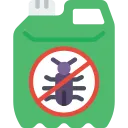A powder filling line is a piece of specialized equipment designed to pour powders or granules into bottles, jars, or other containers. To accurately dose and disperse the substance into the container, this cutting-edge equipment makes use of an auger screw. The motorized auger powder filling line from Lodha provides exceptional adaptability at a low cost. Its reliable construction means there is no need to worry about expensive breakdowns. It may be used to restock both fluid and non-fluid dry goods. Whether you're filling bottles for a 5mg medicinal use or a 500mg. bulk product fill, our auger powder capper is up to the job. Accuracy levels of 1% or above are sufficient for most filling applications.
In addition, we provide comprehensive options for things like equipment building materials, air washers, Auger fillers, capping machines, labelling machines, electromagnetic induction systemsand weight checkers.
Auger machines would help your company's integrated manufacturing line run more smoothly and produce better goods more quickly and with more precision.
Multiple options of powder filling packaging lines are available from us. Our company produces and supplies the powder filling lines indicated below.
Looking for a durable, long-lastingand user-friendly auger filler for powder products? Powder filling equipment, including semi-automatic and automated models as well as fill-to-weight, rotary, high-speedand multiple-auger fillers, is available from us. Allow All-Fill's auger powder weighing filling equipment to maximize efficiency and speed up your time-consuming powder filling processes. Powder filling machines may be either quantitative or volumetric, depending on the machine design and the amount of automation. While some filling machines are limited to working with just free-flowing powders, others are able to accommodate both types.
Using interchangeable components, our automated bottle capping machine can accommodate a broad variety of bottle sizes and capping styles. Caps with a maximum diameter of 120 millimeters may be used with our bottle capping machine's maximum output of 120 bottles per minute. Our Rotary Capper may be used with bottles of almost any shape. Various screw-on capping heads are included for use with different types of plastic or glass bottles. To begin, there is a wide variety in form, size, weight, energy needs, etc., between the manual, semi-automaticand automated models. There is a growing number of items in every marketand these products have varying needs depending on their function, their contentsand the packaging they come in.
That's why it's important to have versatile sealing and capping devices on hand. Dispensing ease, durabilityand accessibility are all factors to consider while designing a closure.
Our induction cap sealers provide heat to the foil seal and sealing layer by passing an electro-magnetic field through the cap, taking advantage of the pressure of the cap on the liner below the cap. This procedure will enable the polymer film and foil seal to bond to the container by heating the foil seal and melting the optional wax layer.
After the cap has been removed, there will be a hermetic seal that can't be broken. This method is lightning quick and very effective. Because the electromagnetic field generates no heat, it does not compromise the quality of the item in any way. Depending on the type of our automated induction sealers, we may achieve sealing speeds of up to 200 bottles per minute using this method.
Automatic sticker labelers from our company are cheap, independentand simple to use. The conveyor speed may be adjusted on this automated labelling system. Auto speed adjust (all motors synchronized), sensors for label gaps and containers, auto teach for new labelsand a power-assisted web pick up are some of the other features. The flexible layout makes adjusting to different bottle and label dimensions a breeze. All types of containers, including plastic, metal, fibersand glass, are compatible with our Labelers. The bottle will spin by itself when the labelling process begins so that the labelling apparatus can apply pressure.







United States | Canada | Mexico | Brazil | Argentina | Chile | Colombia | Peru | Germany | United Kingdom | France | Italy | Spain | Netherlands | Belgium | Switzerland | Sweden | Austria | Denmark | Norway | Poland | Finland | Czech Republic | Hungary | Portugal | Ireland | Greece | Slovakia | Romania | Bulgaria | China | Japan | India | South Korea | Indonesia | Vietnam | Thailand | Malaysia | Philippines | Singapore | Bangladesh | Pakistan | Saudi Arabia | United Arab Emirates | Israel | Turkey | Iran | Qatar | Kuwait | South Africa | Nigeria | Egypt | Algeria | Morocco | Kenya | Ghana | Tunisia | Australia | New Zealand | Russia | Ukraine | Belarus | Kazakhstan | Taiwan | Hong Kong | South Sudan | Uzbekistan | Oman | Jordan | Bahrain | Sri Lanka | Myanmar | Lebanon | Mongolia | Ethiopia | Libya | Angola | Zambia | Zimbabwe | Mozambique | Ivory Coast | Senegal | Uganda | Tanzania | Botswana | Ecuador | Venezuela | Bolivia | Paraguay | Uruguay | Trinidad and Tobago | Panama | Guatemala | Costa Rica | Honduras | El Salvador | Nicaragua | Dominican Republic | Haiti | Cuba